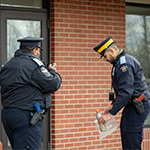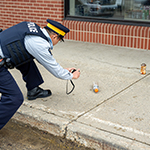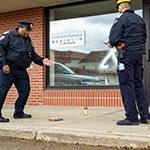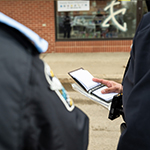Training Tuesdays: Evidence collection
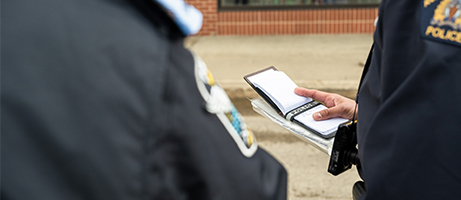
First posted on August 20, 2024
Cadets are introduced to evidence collection early on in the Cadet Training Program.
Evidence comes from different sources. People can provide evidence, such as eyewitnesses or anyone with relevant information. Objects, like physical items connected to the incident, are also crucial pieces of evidence. Documents, whether written or electronic records, offer insights that can be very helpful in an investigation.
Evidence is any fact, opinion, belief, or knowledge that can be used in an investigation. It can be material or not, and it doesn't matter if it's admissible in court. This is outlined in Section 118 of the Criminal Code
Collecting evidence is a meticulous and methodical process which include the handling, labelling, storing and transporting evidence.
During their training, cadets learn how to carefully pick up the item, making sure not to disturb any fingerprints or marks. They then label the item with the time, date, and the initials of the officer who seized it. The cadet is required to document about the seizure in their police notebook. The item is then placed in the appropriate receptical, depending on what it is.
Understanding and mastering these steps ensure the integrity of the evidence, which is crucial for any investigation.
Image gallery
- Date modified:
